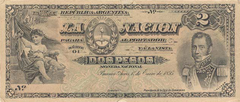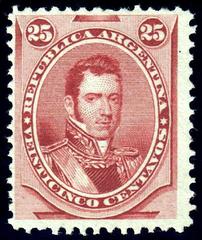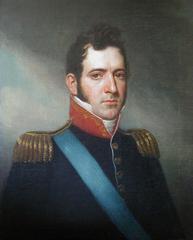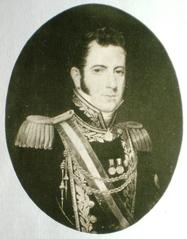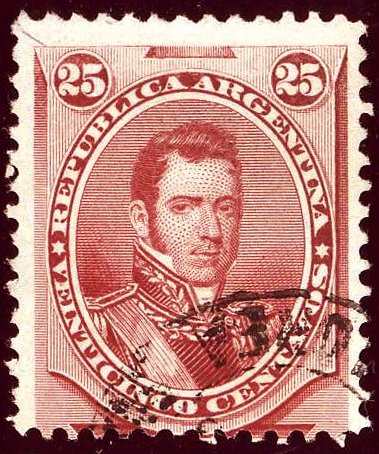
Carlos María De Alvear Visiting Hours, Tickets, and Travel Guide: Buenos Aires Historical Sites
Date: 14/06/2025
Introduction
Buenos Aires is a city woven from the threads of history, art, and political transformation. Among the luminaries who shaped Argentina’s path to independence, General Carlos María de Alvear stands out as a leader whose legacy is imprinted on the city’s landscape. From his mausoleum in Recoleta Cemetery to the monumental equestrian statue and the elegant Avenida Alvear, these landmarks provide visitors with a window into Argentina’s storied past.
This comprehensive guide will help you plan your visit to these sites, offering essential details on visiting hours, ticketing, accessibility, guided tours, and nearby attractions. Whether you are a history enthusiast or a curious traveler, this resource ensures you get the most out of your exploration of Buenos Aires’ historical gems. For further planning, consult official tourism sites and travel platforms (Buenos Aires Tourism, The Crazy Tourist, Medios Agrupados).
About Carlos María de Alvear and His Mausoleum
Carlos María de Alvear (1789–1852) was a pivotal figure in Argentina’s independence, serving briefly as Supreme Director of the United Provinces of the Río de la Plata. His multifaceted career included military victories, political leadership, periods of exile, and diplomatic service. He was laid to rest in a mausoleum designed by architect Alejandro Christophersen in 1905, located within the iconic Recoleta Cemetery—a site renowned for its elaborate tombs and prominent residents.
Visiting the Mausoleum
- Location: Recoleta Cemetery, Junín 1760, Buenos Aires, Argentina
- Hours: Daily, 8:00 AM – 6:00 PM
- Entrance Fee: Free
The mausoleum’s architecture reflects early 20th-century grandeur and is a highlight of any Recoleta visit.
Monumento Ecuestre a Carlos María de Alvear
Location and Significance
The Monumento Ecuestre a Carlos María de Alvear is located at Plaza Julio de Caro, at the intersection of Avenida del Libertador and Avenida 9 de Julio. This striking equestrian statue, created by Antoine Bourdelle and unveiled in 1926, powerfully symbolizes Alvear’s role in Argentina’s independence. Considered one of Bourdelle’s masterpieces, the statue is a focal point of Buenos Aires’ public art (Medios Agrupados).
Pedestal and Surroundings
The monument stands atop a 13-meter pink granite pedestal designed by Alejandro Bustillo and is surrounded by four allegorical bronze sculptures representing Strength, Eloquence, Liberty, and Victory.
Visitor Information
- Accessibility: Open-air plaza, accessible 24/7, no ticket required
- Getting There: Easily reached via bus, taxi, or the Subte subway system
Early mornings and late afternoons provide ideal lighting for photography and a quieter atmosphere.
Avenida Alvear: The Aristocratic Avenue
Avenida Alvear, named after General Alvear and designed by his son Torcuato de Alvear (the first mayor of Buenos Aires), epitomizes the city’s aristocratic heritage. This tree-lined avenue is celebrated for its Belle Époque architecture, luxury shopping, embassies, and cultural hotspots.
Highlights Along Avenida Alvear
- Alvear Palace Hotel: Belle Époque landmark, open to visitors daily; enjoy afternoon tea (reservations recommended) (Alvear Palace Hotel Official Site)
- Palacio Duhau – Park Hyatt: French-style palace with world-class dining and a renowned pastry shop
- Embassies & Palaces: Palacio Pereda (Brazilian Embassy), Palacio Ortiz Basualdo (French Embassy)
- Patio Bullrich: Upscale shopping mall in a restored historic building
Accessibility and Getting There
The avenue’s wide, smooth sidewalks are generally wheelchair-friendly. Arrive by bus, taxi, or from the Las Heras or Retiro subway stations.
Visiting La Recoleta Cemetery
La Recoleta Cemetery is a must-see for its elaborate mausoleums, leafy walkways, and notable burials, including Eva Perón and Carlos María de Alvear.
- Location: Junín 1760, Recoleta, Buenos Aires
- Hours: 8:00 AM – 6:00 PM daily; hours may vary on holidays
- Admission: Free
- Guided Tours: Available in several languages for a fee; highly recommended for historical insight
Wear comfortable shoes and be respectful when taking photographs.
Nearby Attractions
- Recoleta Cultural Center: Art exhibits and performances
- Basilica of Our Lady of Pilar: 18th-century church adjacent to the cemetery
- Museo Nacional de Bellas Artes: Leading collection of Argentine and international art
- Plaza San Martín and Parque 3 de Febrero: Lush urban parks nearby
Guided Tours and Special Events
- Official Cemetery Tours: Multilingual, bookable via the Buenos Aires tourism website
- Audio Guides: Available at the cemetery entrance or via mobile apps
- Walking Tours: Many city tours include stops at the Alvear monument and Avenida Alvear
- Cultural Events: Avenida Alvear and nearby plazas host art fairs, concerts, and festivals—especially in spring and autumn
Practical Travel Tips
- Best Time to Visit: Spring (September–November) and autumn (March–May) offer ideal weather
- Dress Code: Smart casual is recommended for upscale venues
- Safety: Recoleta is considered safe; remain mindful of belongings
- Photography: Permitted at all public sites; be respectful of funerals and private events
- Accessibility: Most public areas are wheelchair-friendly, though some historic interiors may have limited access
Frequently Asked Questions (FAQ)
Q: Do I need tickets for the mausoleum, monument, or Avenida Alvear?
A: All three are free to access. Some guided tours or special events may require tickets.
Q: What are the visiting hours for these sites?
A: Recoleta Cemetery: 8:00 AM – 6:00 PM. The monument and Avenida Alvear are accessible 24/7.
Q: Are guided tours available?
A: Yes. Official and private tours are available for the cemetery and Avenida Alvear. Audio guides are offered at the cemetery.
Q: Is the area accessible for wheelchair users?
A: Most sidewalks and public spaces are accessible, but some historic buildings may present challenges.
Q: What other attractions are nearby?
A: Recoleta Cultural Center, Basilica of Our Lady of Pilar, Museo Nacional de Bellas Artes, and Plaza San Martín.
Visuals and Interactive Resources
Explore high-quality images, photo galleries, and interactive maps of all Carlos María de Alvear sites via official tourism websites and reputable travel guides. Virtual tours are also available for Recoleta Cemetery and Avenida Alvear (Buenos Aires Tourism, Medios Agrupados).
Conclusion: Experience the Legacy of Carlos María de Alvear
The Carlos María de Alvear mausoleum, Monumento Ecuestre, and Avenida Alvear together form a compelling narrative of Argentine history, art, and urban identity. These landmarks not only honor a key figure in Argentina’s independence but also showcase Buenos Aires’ artistic and architectural grandeur.
Plan your visit during spring or autumn for the best experience, and make use of guided tours and official resources to enrich your knowledge. Download the Audiala app for audio-guided tours and stay tuned to official platforms for event updates and travel tips. Immerse yourself in the stories and beauty of Buenos Aires’ most distinguished neighborhoods, and discover the enduring legacy of Carlos María de Alvear.

